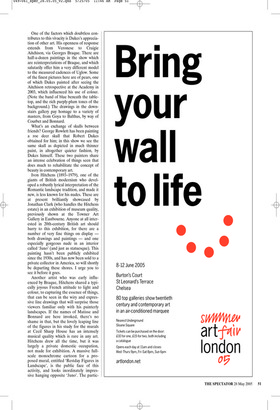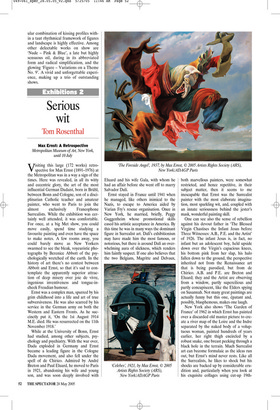Bring your wall tolife
One of the factors which doubtless contributes to this vivacity is Dukes’s appreciation of other art. His openness of response extends from Veronese to Craigie Aitchison, via Georges Braque. There are half-a-dozen paintings in the show which are reinterpretations of Braque, and which salutarily offer him a very different model to the measured cadences of Uglow. Some of the finest pictures here are of pears, one of which Dukes painted after seeing the Aitchison retrospective at the Academy in 2003, which influenced his use of colour. (Note the band of blue beneath the tabletop, and the rich purply-plum tones of the background.) The drawings in the downstairs gallery pay homage to a variety of masters, from Goya to Balthus, by way of Courbet and Bonnard.
What’s an exchange of skulls between friends? George Rowlett has been painting a roe deer skull that Robert Dukes obtained for him; in this show we see the same skull as depicted in much thinner paint, in altogether quieter fashion, by Dukes himself. These two painters share an intense celebration of things seen that does much to rehabilitate the concept of beauty in contemporary art.
Ivon Hitchens (1893–1979), one of the giants of British modernism who developed a robustly lyrical interpretation of the Romantic landscape tradition, and made it new, is less known for his nudes. These are at present brilliantly showcased by Jonathan Clark (who handles the Hitchens estate) in an exhibition of museum quality, previously shown at the Towner Art Gallery in Eastbourne. Anyone at all interested in 20th-century British art should hurry to this exhibition, for there are a number of very fine things on display both drawings and paintings — and one especially gorgeous nude in an interior called ‘Juno’ (and just as statuesque). This painting hasn’t been publicly exhibited since the 1930s, and has now been sold to a private collector in America, so will shortly be departing these shores. I urge you to see it before it goes.
Another artist who was early influenced by Braque, Hitchens shared a typically joyous French attitude to light and colour, to capturing the essence of things, that can be seen in the wiry and expressive line drawings that will surprise those viewers familiar only with his painterly landscapes. If the names of Matisse and Bonnard are here invoked, there’s no shame in that, but the lovely leaping line of the figures in his study for the murals at Cecil Sharp House has an intensely musical quality which is rare in any art. Hitchens drew all the time, but it was largely a private domestic occupation, not made for exhibition. A massive fullscale monochrome cartoon for a proposed mural, entitled ‘Restday Figures in Landscape’, is the public face of this activity, and looks inordinately impressive hanging opposite ‘Juno’. The partic ular combination of kissing profiles within a taut rhythmical framework of figures and landscape is highly effective. Among other delectable works on show are ‘Nude – Pink & Blue’, a late but highly sensuous oil, daring in its abbreviated form and radical simplification, and the glowing ‘Figure – Variations on a Theme No. 9’. A vivid and unforgettable experience, making up a trio of outstanding shows.























































 Previous page
Previous page